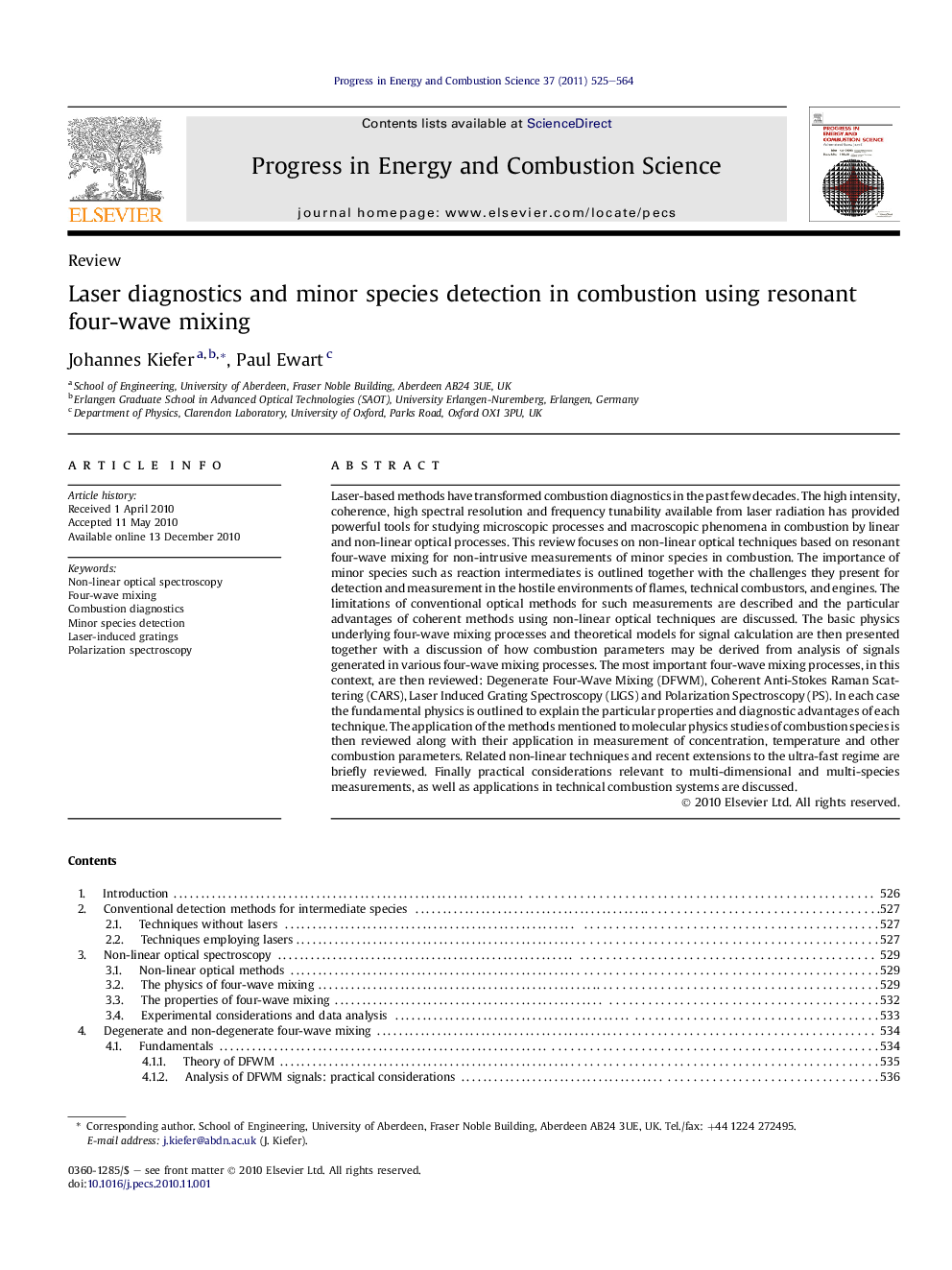| Article ID | Journal | Published Year | Pages | File Type |
|---|---|---|---|---|
| 241736 | Progress in Energy and Combustion Science | 2011 | 40 Pages |
Laser-based methods have transformed combustion diagnostics in the past few decades. The high intensity, coherence, high spectral resolution and frequency tunability available from laser radiation has provided powerful tools for studying microscopic processes and macroscopic phenomena in combustion by linear and non-linear optical processes. This review focuses on non-linear optical techniques based on resonant four-wave mixing for non-intrusive measurements of minor species in combustion. The importance of minor species such as reaction intermediates is outlined together with the challenges they present for detection and measurement in the hostile environments of flames, technical combustors, and engines. The limitations of conventional optical methods for such measurements are described and the particular advantages of coherent methods using non-linear optical techniques are discussed. The basic physics underlying four-wave mixing processes and theoretical models for signal calculation are then presented together with a discussion of how combustion parameters may be derived from analysis of signals generated in various four-wave mixing processes. The most important four-wave mixing processes, in this context, are then reviewed: Degenerate Four-Wave Mixing (DFWM), Coherent Anti-Stokes Raman Scattering (CARS), Laser Induced Grating Spectroscopy (LIGS) and Polarization Spectroscopy (PS). In each case the fundamental physics is outlined to explain the particular properties and diagnostic advantages of each technique. The application of the methods mentioned to molecular physics studies of combustion species is then reviewed along with their application in measurement of concentration, temperature and other combustion parameters. Related non-linear techniques and recent extensions to the ultra-fast regime are briefly reviewed. Finally practical considerations relevant to multi-dimensional and multi-species measurements, as well as applications in technical combustion systems are discussed.
